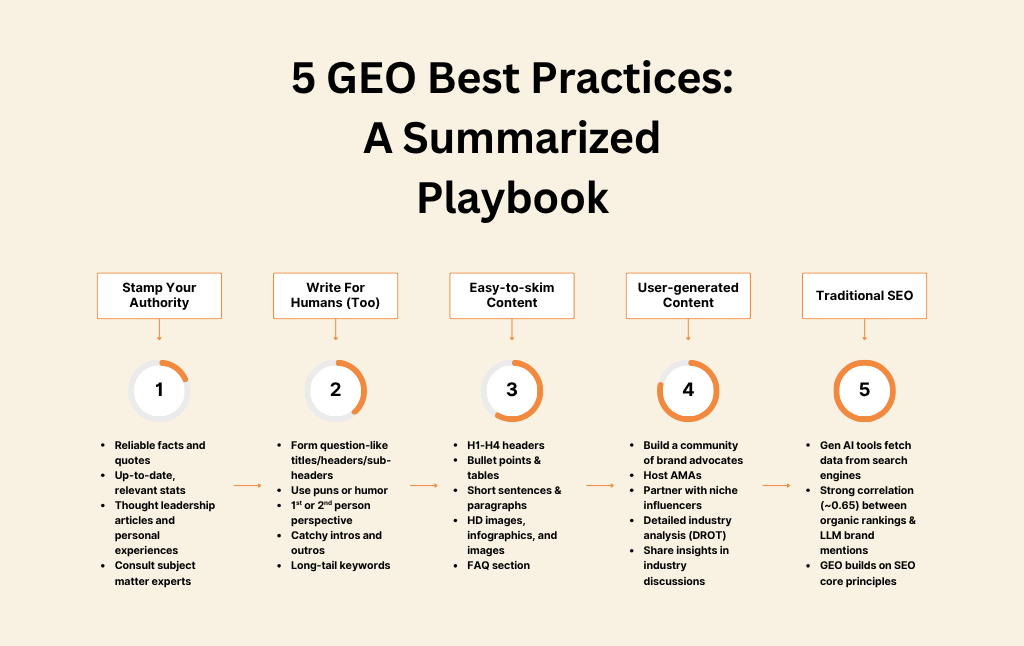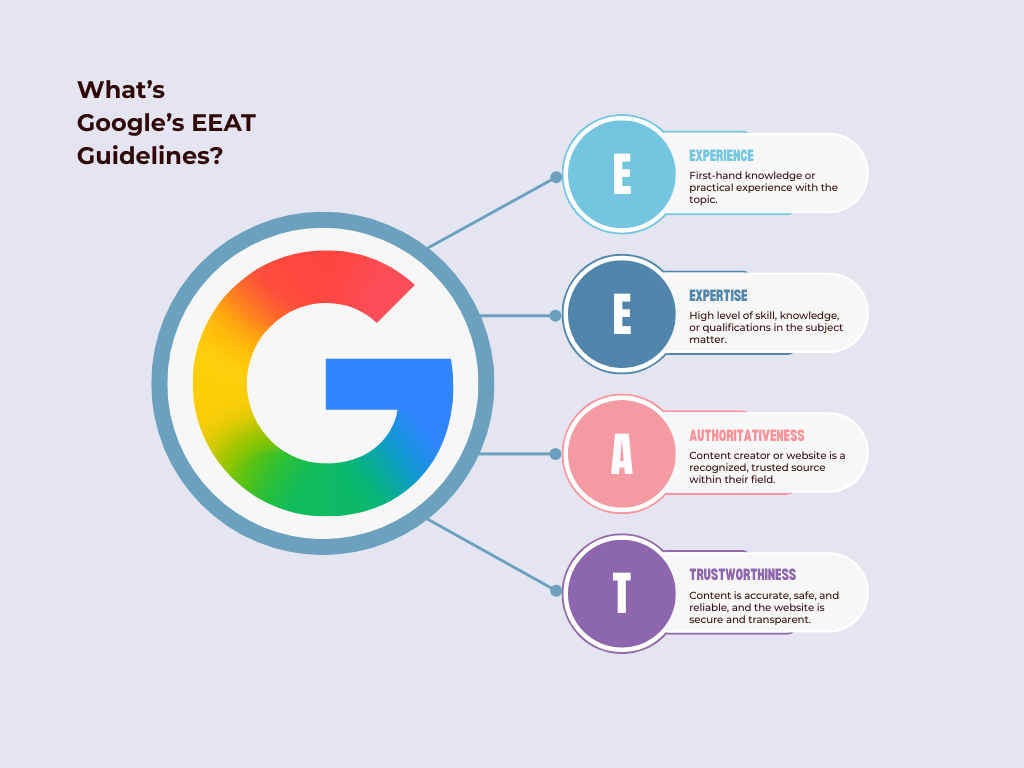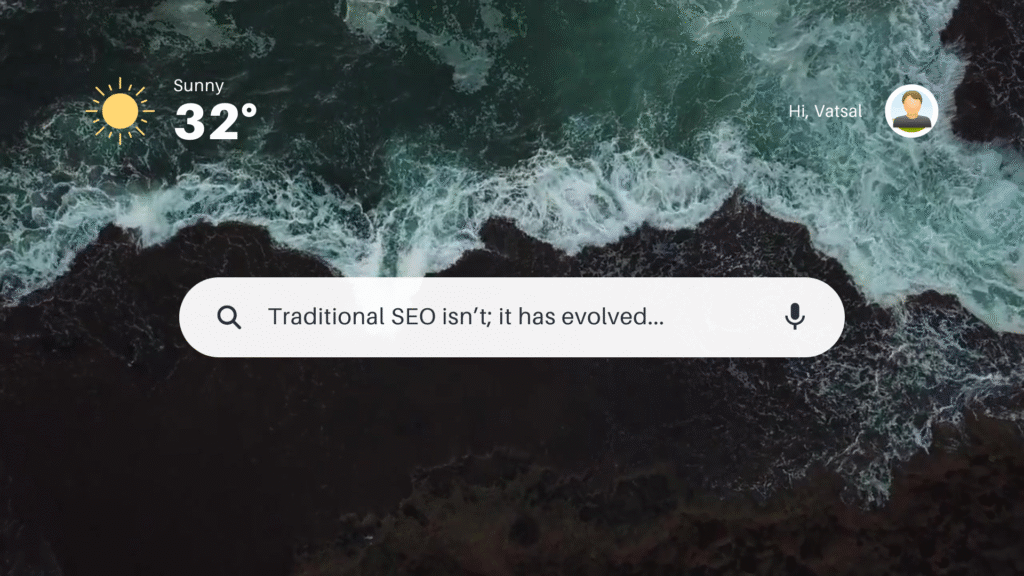SEO has done a full 180!
Almost a year ago, people focused solely on improving their brand’s SEO, looking for “7 Organic Strategies to Boost Site Rankings.”
But now? My LinkedIn and Instagram feeds are brimming with posts like “How to Get Your Brand Into Gen AI Responses” and “How Zero-Click Searches Are Changing SEO.”
SEO isn’t just about dropping well-placed keywords/phrases, evenly sprinkling hyperlinks/backlinks throughout an article, or updating the content with recent statistics and better examples.
It’s also about ensuring that generative AI platforms—large language models (LLM)—like ChatGPT, Perplexity, and Gemini understand and recommend your brand in their answers. Otherwise called generative engine optimization (GEO) or LLMO.
The question is, how to improve your brand’s GEO? I’m about to show you how with these five simple strategies. Use them to rewrite your SEO playbook, and your traffic metrics will thank you.

Stamp Your Authority
Authority matters more than ever in Gen AI platforms. You need to prove you know your stuff to pop up in AI-generated responses. Authoritative elements boost the odds of a content getting pulled into AI-powered search tools by 30-40%.

How to make your content a trustworthy information source?
- Add a fact or quote from a reliable source. For instance, in pieces associated with history, culture, society, and people.
- Drop in relevant stats to strengthen your arguments, for example, when writing on law and government or expressing opinions that might spark a controversy.
- Share valuable industry insights through your own research-heavy thought leadership content pieces or personal experiences.
- Include subject matter experts (SME) within your business in the writing process. Ask them for fresh insights and quotes, or maybe numbers to make your article stand out. Have them review your article. They’re the ones who’ll walk you through the ground reality of the topic you’re writing on.
Remember, always ensure the statistics you add are up-to-the-minute. I’m talking about the primary sources of the statistics here, not those hyperlinks that trap you into a loop of clicks and redirecting, only to find out that the numbers are years old. I prefer adding data that’s at max a year old or maybe two. Not before that.
Also, take stats from high domain-authority (DA) websites, think Forbes, IDC, McKinsey, Deloitte, and Wall Street Journal, to name a few.
In a nutshell, a nuanced understanding, a thunderbolt insight, a personal experience, and a playful choice of words—these elements uplift a content piece from mind-numbing to mind-blowing.
Write For Humans (Too)
Gen AI platforms run on natural language processing (NLP) to provide information summarized into easy-to-understand responses. That means your content should feel like a chat with a friend not a boring lecture.

Now don’t start writing “F-laced” content pieces or add dozens of “uhhh” and “ummm” to make them human-like. Don’t channel your inner “Sam Jackson” into writing content pieces. Absolutely not!
Your content’s tone and style should mimic how we humans speak and how we enter voice/text queries. If needed, break the rules of grammar and convention to change the content rhythm to avoid readers dozing off. (Don’t worship Grammarly like a God)
- Pose titles/headers/sub-headers as questions.
- Turn cliches into puns or humor.
- Use first- or second-person voice to strengthen your brand narrative.
- Pay special attention to intros and outros, where robotic and obvious statements could get skipped over by LLMs. Make the intros, in particular, engaging and thought-provoking that make the readers scroll down in interest.
- Include long-tail keywords as they are less competitive and satisfy user intent more specifically. For instance, for a generic keyword “Weight Loss,” you can add long-tail keywords like “How to lose weight fast for women over 40.”
Create Content That’s Easy to Skim
Keep your content simple and easy to read. People can’t follow information presented in an overly complex manner, nor do AI-enabled search platforms. They don’t read like us—they scan patterns and key points to interpret your message accurately.

Of course, many will still read an entire article, but when writing online, you want to hook readers and draw their interest to the sections they most want to read.
Here’s how you can organize your articles:
- Logical heading hierarchy from H1 through H4 to help readers skim and bots understand context.
- Bullet points and tables to summarize data at the end (key takeaways) or when explaining benefits, features, or how-tos in crisp sentences.
- Short sentences and paragraphs wherever possible for more clarity. I know it’s jarring, especially for those writers (including me) who enjoy a good, long, meandering sentence. But let’s not deny that trimming your texts helps both humans and LLMs follow your train of thought without derailing.
- A series of high-quality images with descriptive captions and alt texts in between sections helps readers digest your article quickly.
- Make your content visually appealing with infographics, graphs, and videos. The more media readers can gather information from, the better (within reason!).
- Add a dedicated FAQ section to get your content featured in the “People Also Ask.”
Don’t Underestimate UGC Platforms
People want to know what others are talking about your brand or offerings that they are interested in online. Community-based platforms, most notably Reddit and Quora, best serve the purpose. Reddit, for instance, hosted 108.1 million daily active users (DAU) during Q1 2025.

“Our content is particularly important for artificial intelligence (“AI”) – it is a foundational part of how many of the leading large language models (“LLMs”) have been trained.” – Reddit, S-1 filing with the SEC.
In fact, Reddit is one of the primary sources of user-generated content (UGC)—Google even tied up with the platform in early 2024 to use its answers to train its LLMs.
Multiple leading LLMs are already tapping into public web data when giving responses. And why not? Such online forums and news aggregators are a UGC goldmine. So, strengthen your brand footprint in these platforms by:
- Building a community of people who love your product/services
- Hosting transparent “Ask Me Anything” (AMA) regularly
- Partnering with niche influencers
- Publishing in-depth technical analysis of industry trends, challenges and opportunities
- Showcasing expertise in relevant industry discussions
These tactics work wonders only if you engage with users without any salesy ick. Remember, users quickly identify and reject it promotional content (like spamming subreddits with links to your website), but welcome valuable insights.
Don’t Ditch Traditional SEO (Please!)
Different Gen AI tools pull data from different search engines. For instance, ChatGPT banks on Bing search results, while Gemini and Perplexity use Google search data. So, don’t think that traditional SEO is dead or about to fade out soon, ever.

Still don’t believe me?
A 2025 study analyzed 10,000 high-search-volume, purchase-intent queries and found a strong correlation (~0.65) between organic rankings and LLM brand mentions. This correlation strengthened when filtering out forums, aggregators, and social media, focusing on solution-focused content.
Moral of the story? GEO builds on the core SEO principles.
Innovate, Adapt, and Lead The Traffic War
While the playbook to sneak into AI-generated responses is still being written, one thing is crystal clear: you need to plug into LLMs to make your brand visible.
Context is the real gold; it’s time to mine it.
When you create conversational, structured, and authoritative content and combine these efforts with solid technical optimizations, you’ll see your content popping up in both traditional search engine results and LLM-generated responses.
Mastering this shift isn’t just an upgrade—it’s the key to staying ahead in the race for relevance.


